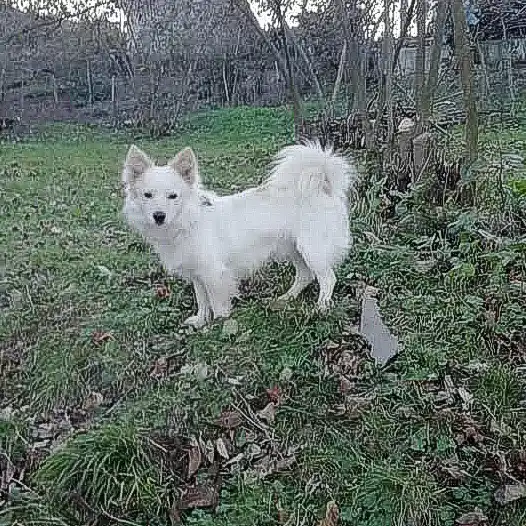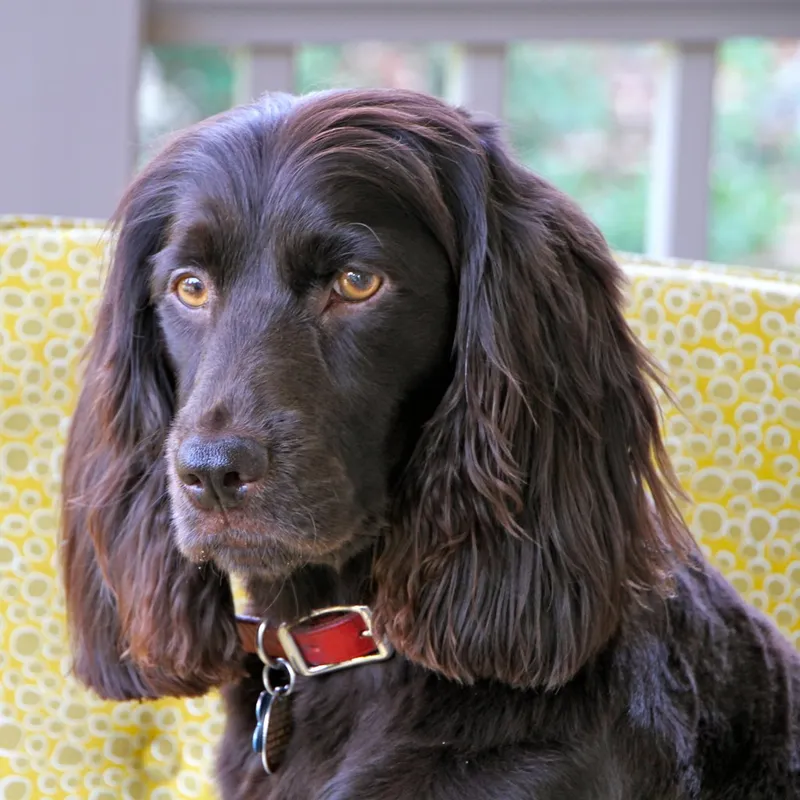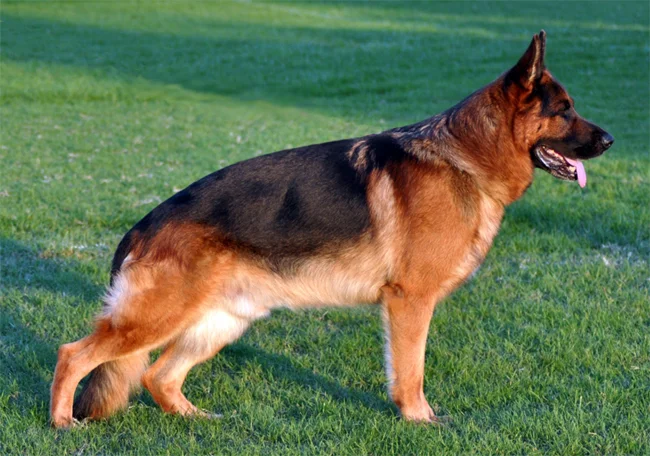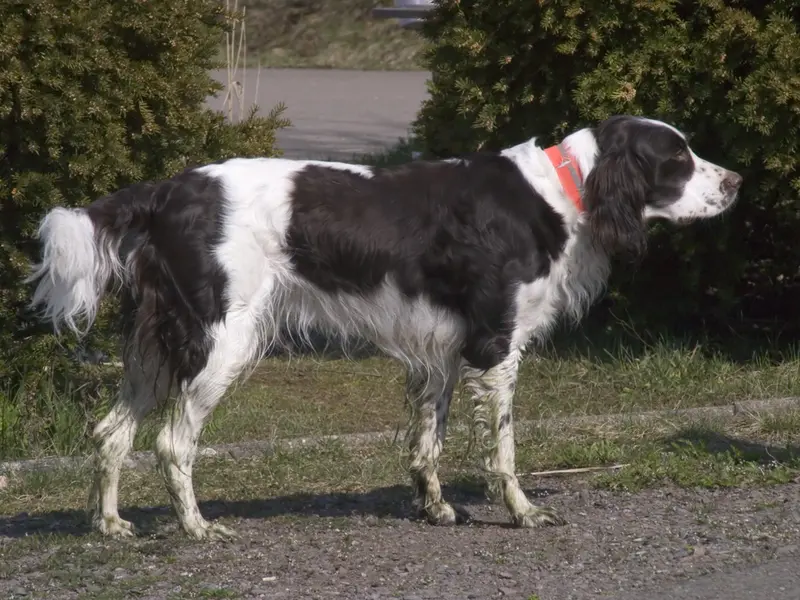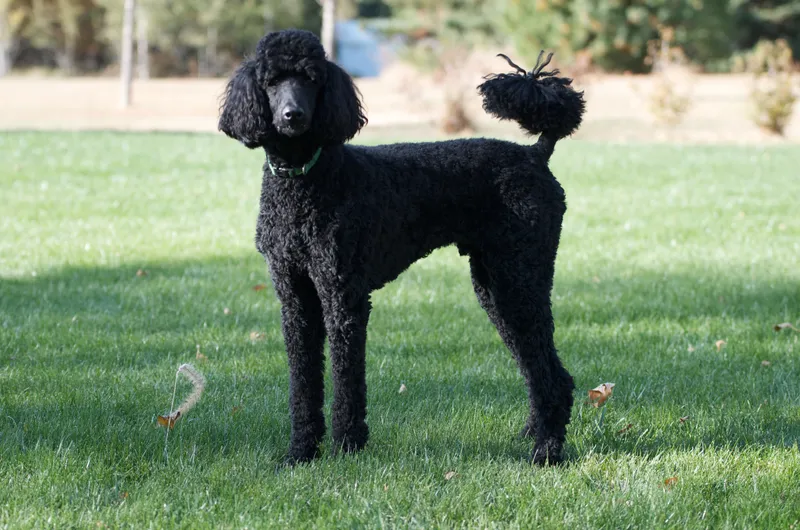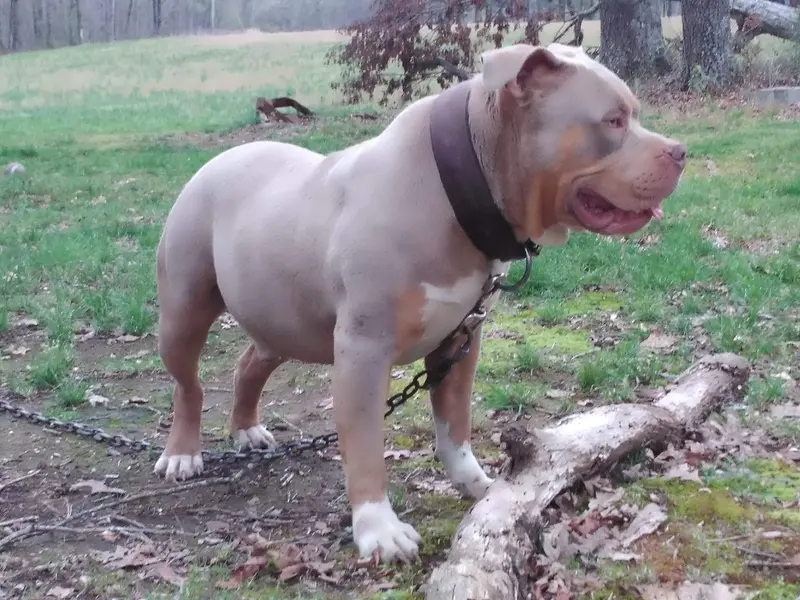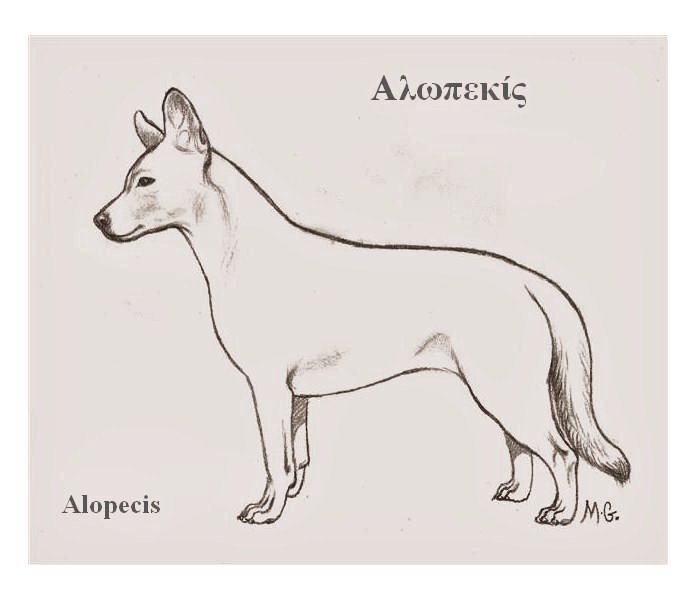Danish Spitz
The Danish Spitz is a friendly and intelligent breed known for its loyalty and adaptability. Ideal for families, they thrive on exercise and mental stimulation.
Overview
🐕Breed Overview
✨Key Traits
💡What Makes Danish Spitz Special
One of the standout traits of the Danish Spitz is its loyalty to family members, often forming strong bonds with them. They are highly trainable due to their intelligence and eagerness to please, making them suitable for various activities, including obedience training and agility sports.
Their playful nature means they enjoy games and interactive play, which can strengthen the bond between the dog and its owner. Additionally, their alertness makes them excellent watchdogs, as they are quick to alert their families to any unusual activity.
Overall, the Danish Spitz is a versatile breed that adapts well to different lifestyles, thriving in environments where they receive plenty of love and attention.
The Danish Spitz is a charming and intelligent breed known for its friendly demeanor and striking appearance. With roots tracing back to ancient Nordic breeds, this versatile dog has served as a herding and guarding companion for centuries. Their loyalty and affectionate nature make them ideal family pets, while their intelligence allows them to excel in various canine sports and activities.
Owners can expect a playful and energetic companion that thrives on regular exercise and mental stimulation. The Danish Spitz is adaptable to different living environments, making it suitable for both urban and rural settings. Their grooming needs are moderate, requiring regular brushing to maintain their beautiful coat.
With proper training and socialization, they can be well-behaved and loving members of any household. Whether participating in agility competitions or simply enjoying playtime with the family, the Danish Spitz is sure to bring joy and companionship to their owners.
🎉Fun Facts
Danish Spitz dogs are known for their agility and excel in dog sports.
The Danish Spitz is known for its distinctive fox-like appearance.
They are often referred to as 'Danish Dogs' in their home country.
They have a playful nature and enjoy interactive games with their owners.
This breed has a strong instinct to protect its family and territory.
Breed Characteristics
Family & Friends
Good Behavior
Get Up & Go
Household Harmony
Temperament & Personality
✨Key Traits
🐕Core Temperament
The Danish Spitz is characterized by its friendly and outgoing temperament. They are generally good-natured and enjoy being around people, including children and other pets. Their playful and affectionate nature makes them great companions, and they thrive on social interaction.
While they can be protective of their family, they are not aggressive and typically warm up to strangers once they sense no threat. Early socialization is important to ensure they develop into well-rounded adults. They can be independent at times, but their desire to please their owners makes training relatively straightforward.
Overall, the Danish Spitz is a loving and loyal breed that fits well into family life.
💫Personality Profile
The Danish Spitz is a friendly and intelligent breed that thrives on companionship and interaction with its family. They are known for their playful demeanor and affectionate nature, making them excellent family pets.
This breed is alert and protective, often serving as a watchdog while remaining gentle with children and other pets. Their energy levels are moderate to high, requiring regular exercise and mental stimulation to keep them happy and healthy.
Danish Spitz dogs are generally sociable and enjoy being part of family activities, making them well-suited for active households.
🔊Vocal Tendencies
The Danish Spitz has a moderate barking tendency. They are known to bark to alert their owners of strangers or unusual sounds, making them effective watchdogs.
However, they are not excessive barkers and will typically only vocalize when necessary. Their vocalizations can include barks, yips, and howls, especially when excited or playing.
Proper training and socialization can help manage their barking behavior, ensuring it remains appropriate and not disruptive. Overall, they communicate effectively with their owners, using vocalizations to express their needs and emotions.
Affection & Social Traits
Energy & Activity
Communication Style
Care Requirements
🏃♂️Exercise Requirements
Daily Exercise
The Danish Spitz is an active breed that requires regular exercise to maintain its physical and mental well-being. Ideally, they should have at least 60 minutes of exercise each day, which can be broken down into multiple sessions.
Activities can include brisk walks, runs, playtime in a secure yard, and engaging in dog sports such as agility or obedience training. Puppies may require shorter, more frequent play sessions to avoid overexertion, while senior dogs may benefit from gentler activities like leisurely walks.
Regular exercise helps prevent obesity, supports cardiovascular health, and reduces behavioral issues stemming from boredom or excess energy. Insufficient exercise can lead to destructive behaviors, anxiety, and weight gain, making it essential for owners to prioritize their exercise needs.
Preferred Activities
🏠Living & Adaptability
Space Requirements
The Danish Spitz is adaptable to various living environments but thrives best in homes with access to outdoor space. They can live comfortably in apartments if provided with sufficient daily exercise and mental stimulation.
A house with a small to medium-sized yard is ideal, allowing them to run and play freely. In rural settings, they can enjoy more space to explore.
Owners in smaller spaces should ensure regular outings to parks or open areas to meet their exercise needs. Lack of adequate space can lead to restlessness and destructive behavior, so it's important to provide opportunities for physical activity.
Climate Preference
🍲Feeding Guide
Schedule
Food Types
Portion Size
Special Nutritional Needs
The Danish Spitz may have specific dietary needs based on their activity level and age. High-quality dog food formulated for their size and energy level is recommended. Owners should monitor for any food sensitivities and consult with a veterinarian for tailored dietary advice, especially for puppies and seniors.
✨Grooming Requirements
Grooming Overview
The Danish Spitz has a double coat that requires regular grooming to keep it healthy and free of mats. They shed moderately, particularly during seasonal changes, so brushing at least once a week is recommended, with more frequent brushing during shedding seasons.
Bathing should be done as needed, typically every 4-6 weeks, using a gentle dog shampoo. Regular nail trimming and dental care are also essential to maintain overall health.
Owners should use a slicker brush for the outer coat and a comb for the undercoat to ensure thorough grooming.
Care Schedule
Brush weekly; bathe every 4-6 weeks; trim nails every 2-4 weeks.
Health Profile
⚕️Health Care
Regular health care is crucial for the longevity of the Danish Spitz. Routine veterinary check-ups, vaccinations, and preventive treatments can help detect and address health issues early.
Owners should maintain a consistent schedule for health care, including dental cleanings and parasite prevention. Proper nutrition and exercise also play a significant role in maintaining optimal health throughout the dog's life, contributing to a longer lifespan.
Health Issues Overview
⏳Average Lifespan
Genetic Factors
Genetics significantly impact the lifespan of the Danish Spitz. Responsible breeding practices that prioritize health and genetic diversity can reduce the risk of hereditary health issues.
Potential owners should seek reputable breeders who conduct health screenings for common breed-specific conditions. Understanding the genetic background of a dog can help owners make informed decisions and anticipate potential health challenges, ultimately influencing the dog's lifespan.
Living Conditions
The lifespan of a Danish Spitz can be influenced by various environmental factors. A stable, loving home with regular exercise and mental stimulation contributes positively to their longevity.
Exposure to extreme weather conditions can impact their health, so providing a comfortable living environment is essential. Social interactions with family and other pets also play a crucial role in their emotional well-being, which can affect their overall health and lifespan.
Regular veterinary care and preventive health measures are vital to ensuring a long, healthy life.
🏥Common Health Issues
Hip Dysplasia
Warning Signs
🔬Diagnosis
Veterinarians typically diagnose hip dysplasia through physical examinations and X-rays.
💊Treatment
Treatment options may include weight management, physical therapy, or surgery in severe cases.
📝Management Tips
Maintain a healthy weight, provide joint supplements, and engage in low-impact exercises to support joint health.
Patellar Luxation
Warning Signs
🔬Diagnosis
Diagnosis is usually made through physical examination and observation of the dog's gait.
💊Treatment
Surgical intervention may be necessary for severe cases.
📝Management Tips
Weight management and controlled exercise can help manage symptoms; severe cases may require surgery.
Allergies
Warning Signs
🔬Diagnosis
Diagnosis involves skin tests or elimination diets to identify allergens.
💊Treatment
Treatment may include medications, topical treatments, or dietary changes.
📝Management Tips
Avoid known allergens and consult a veterinarian for appropriate treatments, such as antihistamines or special diets.
🛡️Preventive Care
🔬Hip Evaluation
Hip Evaluation assesses the hip joints for dysplasia and other abnormalities, crucial for preventing joint issues.
📅 Recommended at 12 months and periodically thereafter, especially for breeding dogs.
🔬Patellar Luxation Evaluation
Patellar Luxation Evaluation checks the kneecaps for proper alignment and movement, important for preventing mobility issues.
📅 Recommended at 12 months and periodically thereafter, especially for breeding dogs.
🔬Allergy Testing
Allergy Testing identifies specific allergens affecting the dog, essential for managing skin and health issues.
📅 As needed, based on symptoms and veterinary advice.
Training
🧠Intelligence & Trainability
💪Work Drive
The Danish Spitz has a strong work drive, stemming from its historical roles as a herding and guarding dog. They thrive on tasks that challenge their intelligence and physical abilities.
Activities such as agility training, obedience competitions, and scent work can provide the mental stimulation they crave. Engaging them in regular training sessions and interactive play can help satisfy their need for purpose.
Without sufficient mental and physical engagement, they may become bored or develop undesirable behaviors, making it essential for owners to provide regular challenges.
⚠️Training Considerations
The Danish Spitz can exhibit some behavioral challenges, particularly if not properly socialized or trained. Common issues include barking, stubbornness, and a tendency to be territorial.
To overcome these challenges, early socialization is crucial, exposing them to various environments, people, and other animals. Consistent training using positive reinforcement methods can help manage their barking and encourage good behavior.
Providing mental stimulation through interactive toys and training exercises can also prevent boredom-related issues. Owners should be patient and persistent, as the breed may require time to adapt to training routines.
📝Training Tips
Training a Danish Spitz requires patience and consistency. Start with basic obedience commands, using positive reinforcement techniques such as treats and praise to encourage desired behaviors.
Socialization should begin early, introducing the puppy to different people, pets, and environments. Incorporating fun activities like agility training or interactive games can keep them engaged and motivated.
Regular training sessions, ideally short and frequent, will help reinforce learning. It's important to establish a routine and be firm yet gentle, as this breed responds best to positive interactions rather than harsh corrections.
History & Heritage
📜Origin Story
The Danish Spitz originated in Denmark, where it was developed as a versatile working dog. Its ancestors were likely brought to the region by early settlers and Vikings, who valued their herding and guarding abilities.
Over the centuries, the breed evolved, adapting to the needs of Danish farmers and families. The Danish Spitz became known for its friendly disposition and intelligence, making it a popular choice for companionship as well as work.
In the early 1900s, efforts were made to formalize the breed's standards, leading to its recognition by the Danish Kennel Club. Today, the Danish Spitz is celebrated not only for its historical significance but also for its role as a loving family pet.
⏳Development History
The Danish Spitz is believed to have descended from ancient Nordic breeds, with roots tracing back to the Vikings. Over time, they were selectively bred for their herding abilities, intelligence, and friendly nature.
The breed was officially recognized in Denmark in the early 20th century, with efforts made to standardize its appearance and temperament. The Danish Kennel Club has played a crucial role in promoting the breed, ensuring that it retains its distinctive characteristics while adapting to modern family life.
Today, the Danish Spitz is celebrated for its loyalty, intelligence, and adaptability, making it a cherished companion in many homes.
🛡️Purpose & Historical Role
Historically, the Danish Spitz served multiple roles, primarily as a herding and guarding dog. They were essential in managing livestock, protecting farms, and alerting owners to potential threats.
Their intelligence and trainability made them valuable companions for farmers and families alike. In modern times, the breed has transitioned into a beloved family pet, known for its affectionate nature and adaptability.
They are often involved in various canine sports and activities, showcasing their agility and intelligence.
🏺Cultural Significance
The Danish Spitz has a rich history in Denmark, where it has been a beloved companion and working dog for centuries. Traditionally, they were used for herding and guarding livestock, showcasing their intelligence and loyalty.
The breed has also appeared in Danish folklore and art, symbolizing companionship and resilience. Their friendly demeanor and striking appearance have made them popular in Danish households, contributing to their cultural significance as family pets.
Today, they are recognized for their versatility, excelling in various roles, including therapy and assistance dogs, further solidifying their place in modern society.
Conservation Status
This breed is less common but has stable populations in certain regions.
